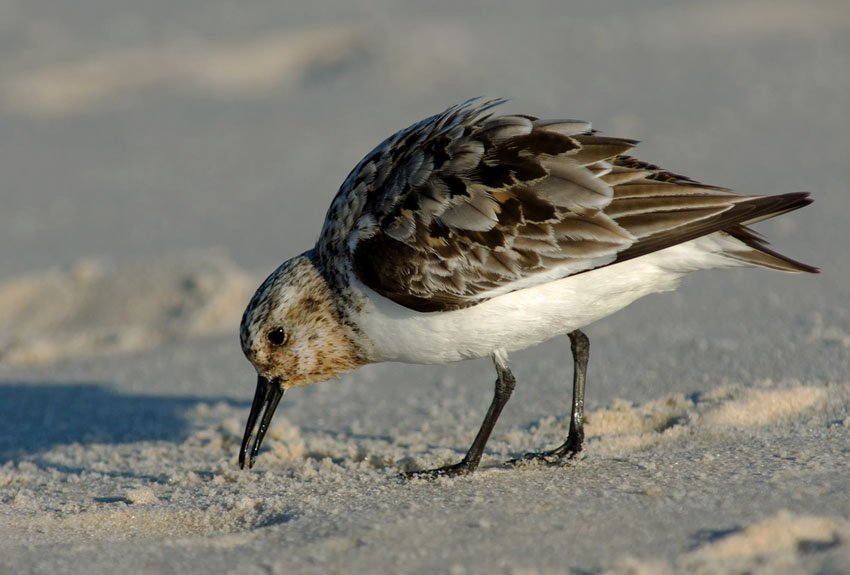Semipalmated Sandpiper

Semipalmated Sandpiper Overview
The semipalmated sandpiper is a small shorebird and a long-distance migrant. In the winter months, the birds migrate in large flocks to warmer regions. They forage on mudflats and mainly feed on aquatic insects and crustaceans. Their breeding habitat is Alaska and Canada's southern tundra. They nest on the ground. The male bird makes a few shallow scrapes in the ground and the female then chooses one and adds grass and other nest material. The female then lays four eggs and the male assists in incubation. When the young ones are just a few days old, the parents leave them and they feed themselves.
Frequently Asked Questions
Where do Semipalmated Sandpipers migrate?
These birds migrate long distances between their Arctic breeding grounds in Alaska and Canada and their wintering grounds in South America, occasionally passing through Hawaii.
What do Semipalmated Sandpipers eat?
They feed mainly on aquatic insects, small crustaceans, and other invertebrates they find while foraging on mudflats and sandy shores.
How do Semipalmated Sandpipers nest?
The male scrapes several shallow depressions in the ground, and the female selects one to line with grass. She lays four eggs, and both parents assist with incubation.
Do both parents raise the chicks?
No. After a few days, the parents leave the chicks to fend for themselves. The young are precocial and begin foraging independently soon after hatching.
What does “semipalmated” mean?
“Semipalmated” refers to the bird's partially webbed feet, which help it walk on muddy surfaces without sinking too deeply.








